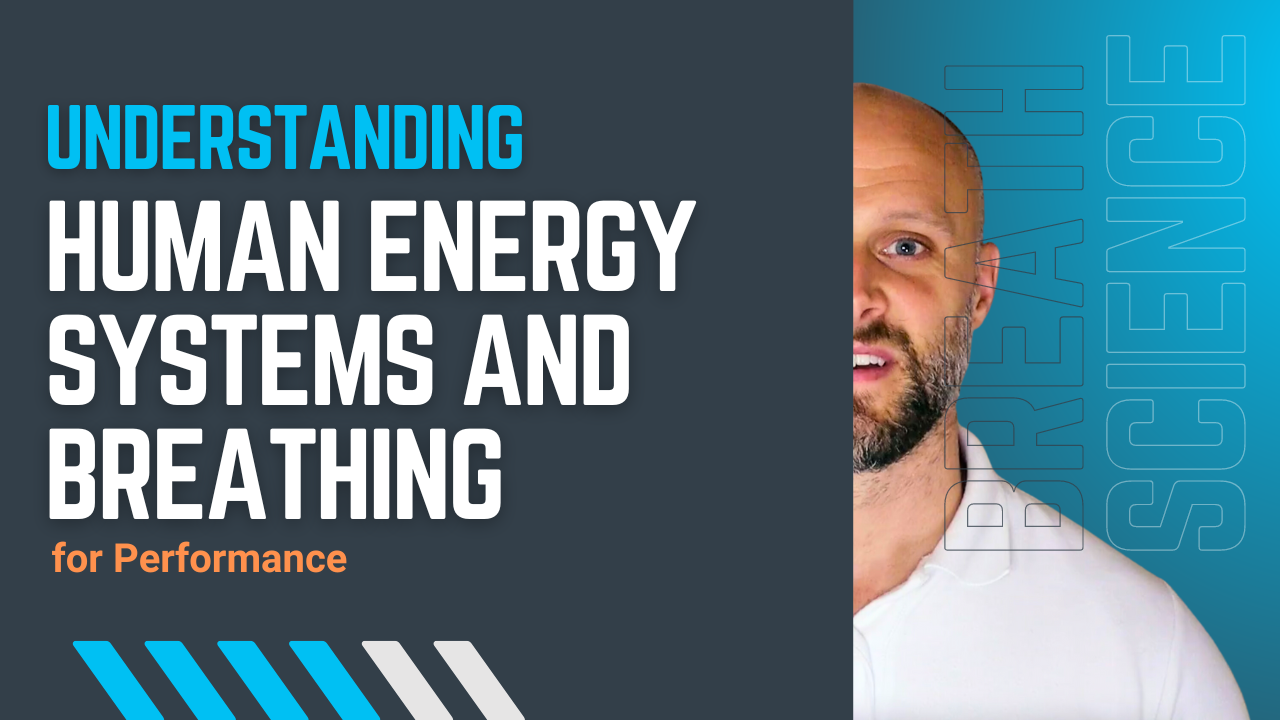Exploring the Impact of Breathing on Performance

Exploring the Impact of Breathing on Performance: Unraveling Human Energy Systems
Welcome to our latest blog post, where we dive deep into the fascinating world of human energy systems and their intricate relationship with our breathing patterns during exercise and competitive scenarios. This exploration is rooted in understanding the creation of Adenosine Triphosphate (ATP), the universal energy molecule essential for muscular contraction, and its correlation with exercise intensity.
Our journey today is inspired by the advanced work of Brian MacKenzie from Shift Adapt. Although we won’t delve extensively into his methods, I highly recommend checking out www.shiftadapt.com for a deeper understanding of his contributions.
Full video and audio episode below
Understanding Energy Systems and Breathing Dynamics
The human body operates on four primary energy systems, each playing a unique role in our physical performance:
1. **Phosphocreatine System**: This fast-acting system is crucial for activities like weightlifting and sprinting. It utilizes phosphocreatine stores in our muscles, making it efficient for short bursts of energy but less sustainable for prolonged activity. Interestingly, supplementation with creatine can enhance these energy stores, aiding recovery and improving brain health and sleep quality.
2. **Glycolytic System (Anaerobic Glycolysis)**: Glucose is broken down into pyruvate, eventually producing lactate. This system is vital for high-intensity activities lasting 30 to 60 seconds and is often associated with muscle-burning sensation and rapid breathing.
3. **Aerobic Glycolysis**: This system kicks in for endurance activities lasting several hours. It’s more efficient, utilizing oxygen to convert glucose into a significantly higher yield of ATP. This process involves the Krebs cycle and oxidative phosphorylation within mitochondria.
4. **Beta Oxidation (Aerobic Fat System)**: At rest or during low-intensity activities, the body predominantly uses fatty acids for energy through beta-oxidation. This system is highly efficient, producing substantial ATP, and is influenced by diet and metabolic state factors.
The Role of Breathing in Energy System Efficiency
Breathing is crucial in determining which energy system the body employs during exercise. By understanding our breathing patterns, we can predict and manipulate our energy system usage, enhancing our performance. For instance, gentle, controlled breathing indicates the body utilizing lower-intensity energy systems, while rapid, heavy breathing signals a shift to more demanding systems.
Training our breathing can significantly impact our performance. For example, nasal breathing helps maintain a lower intensity, enabling us to conserve energy and increase endurance. Conversely, mouth breathing or hyperventilation can prematurely shift us into higher-intensity energy systems, leading to quicker fatigue.
Performance Breathing Practical Applications and Future Directions
Understanding and training our breathing can be a game-changer in athletic performance. It’s not just about enduring high-intensity workouts; it’s about being more efficient and economical with our energy use. This can lead to better performance, reduced injury risk, and improved health.
In our subsequent sessions, we will explore how breathing responds to environmental factors like temperature changes, altitude, and CO2 levels, further solidifying the importance of breathing in our overall fitness and health.
Remember, the key to unlocking your performance potential lies in understanding and harnessing the power of your breath. Stay tuned for more insights, and don’t forget to subscribe and share your thoughts in the comments below. Let’s breathe our way to peak performance!
For more on how to use this information, visit: www.performancethroughhealth.com



